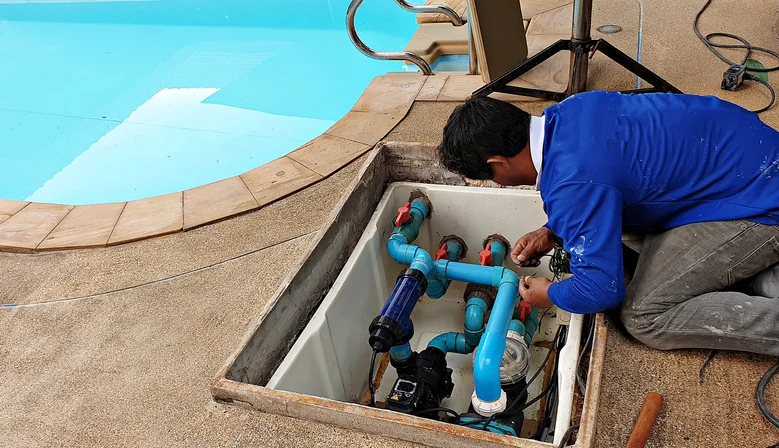
Image Source: Google
Keeping your pool water clean and safe for swimmers requires a delicate balance of chlorine and pH levels. Proper maintenance of these two factors is essential for preventing algae growth, killing harmful bacteria, and ensuring overall water quality. Here are some expert tips on how to effectively manage chlorine and pH levels in your aquatic pool. If you are looking for the best aquatic pool management then, you can contact Aquatic Management.
1. Understanding Chlorine
What is Chlorine?
Chlorine is a common chemical used in pools to disinfect water by killing bacteria and other harmful microorganisms. It comes in different forms, such as liquid, granular, or tablets. Maintaining the right chlorine levels is crucial for a healthy swimming environment.
Recommended Chlorine Levels
- For regular pools: 1.0-3.0 ppm (parts per million)
- For saltwater pools: 1.0-3.0 ppm
- For hot tubs and spas: 3.0-5.0 ppm
Factors Affecting Chlorine Levels
- Sunlight exposure
- Number of swimmers
- Pool usage frequency
- Temperature
2. Managing pH Levels
Importance of pH Levels
pH levels indicate the acidity or alkalinity of the pool water. Maintaining the proper pH balance is essential for chlorine to work effectively. If the pH levels are too high or too low, it can lead to skin and eye irritation, corrosion of pool equipment, and inefficient chlorine performance.
Recommended pH Levels
- Ideal range: 7.2-7.6
- For saltwater pools: 7.4-7.6
Factors Affecting pH Levels
- Chlorine levels
- Swimmer waste (sweat, urine)
- Rainfall
- Chemical imbalances
3. Balancing Chlorine and pH Levels
Testing and Monitoring
Regularly test chlorine and pH levels using pool test kits or strips. Aim to test the water at least 2-3 times a week, especially during heavy pool usage periods. Make adjustments as needed to maintain the proper balance.
Adjusting Chlorine Levels
- If chlorine levels are low, add a chlorine shock treatment to boost levels.
- If chlorine levels are high, dilute the water by adding fresh water or a chlorine neutralizer.
Adjusting pH Levels
- To raise pH levels, add a pH increaser (soda ash or sodium carbonate).
- To lower pH levels, add a pH reducer (sodium bisulfate or muriatic acid).
4. Best Practices for Pool Maintenance
Regular Cleaning
Skim the pool surface, vacuum the pool floor, and clean the walls to remove debris and prevent algae growth. Regular cleaning helps maintain water clarity and reduces the strain on chlorine levels.
Proper Filtration
- Run the pool pump and filter for at least 8-12 hours a day to circulate and filter the water effectively.
- Backwash or clean the filter regularly to ensure optimal filtration.
Professional Maintenance
Consider hiring a professional pool service for regular maintenance checks, deep cleanings, and equipment inspections to ensure your pool is in top condition.
5. Conclusion
Managing chlorine and pH levels in your aquatic pool is essential for a safe and enjoyable swimming experience. By understanding the factors that affect these levels and following best practices for maintenance, you can achieve a well-balanced pool environment. Remember to test the water regularly, make adjustments as needed, and invest in proper cleaning and filtration to keep your pool in pristine condition.